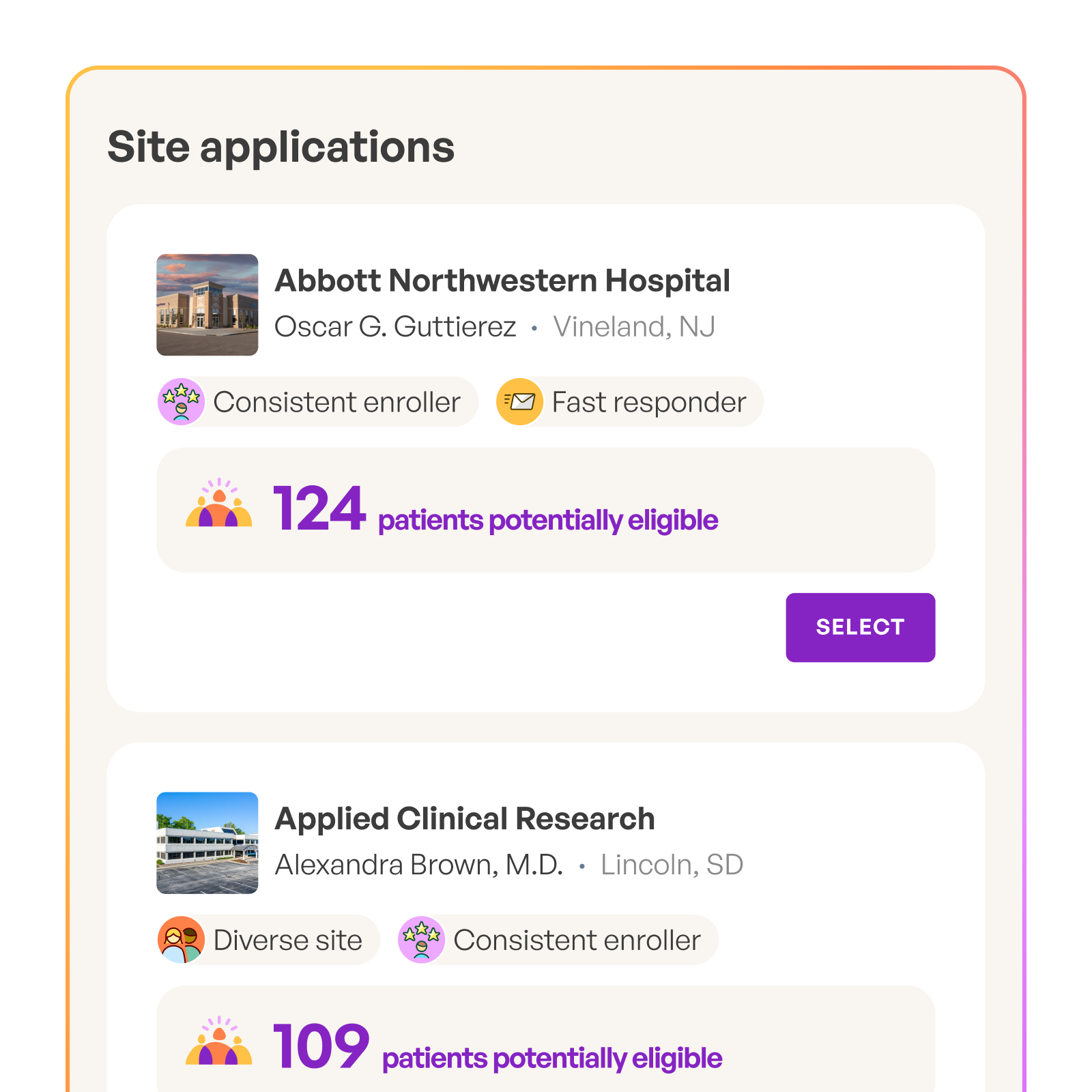SCOPE Europe: Modernizing Feasibility: How Early Site Engagement is Transforming Clinical Trials

At SCOPE Europe this year, Inato’s Liz Beatty sat down with Sanofi’s Diedre Heine to explore how early site engagement is disrupting the traditional feasibility model.
For decades, feasibility and site selection have followed a static, redundant model. Sites are often burdened with repetitive questionnaires and excluded from shaping trial protocols. The result? Delays, amendments, and inefficiencies that cost both time and trust.
But forward-thinking sponsors are turning that model on its head with the help of Inato.
Why the Old Model No Longer Works
Traditional feasibility processes rely on study-by-study surveys, often asking the same 20–40 questions. According to Heine, this feedback typically comes too late to impact the protocol, leading to inefficiencies and mid-study amendments.
Shifting to Early Site Engagement
Sanofi’s new approach removes low-value steps and taps into local team knowledge and site history. Rather than repeating surveys, they now gather insights early and reserve detailed questions for the qualification stage. The results? Faster timelines, stronger site relationships, and a more human approach to engagement.
Managing Risk Through Transparency
Engaging early inevitably comes with ambiguity, but transparency reduces that risk. As Heine explained, clear and consistent communication gives sites the confidence and clarity they need to adapt. While it’s common to return to trusted sites, forward-thinking sponsors are turning that model on its head by embracing more collaborative and transparent site engagement strategies.
Matching the Right Sites to the Right Trials
Not all trials require the most experienced sites, in some instances, local expertise or access to specific patient populations is more valuable. Sanofi combines internal data with Inato’s site access and AI insights to strike the right balance and build a strategically aligned site mix.
The Role of AI and Human Judgment
AI plays a crucial role in this transformation, but it’s not about replacing people. At Sanofi, AI is used to reduce bias, surface insights, and improve efficiency, while final decisions remain human-driven. Their “human-centered AI” model combines expert, generative, and “snackable” AI for different use cases.
AI in Action: Patient Pre-Screening
A standout example of the partnership between Sanofi and Inato is the AI-powered patient pre-screening pilot. With Inato, Sanofi’s sites achieved up to an 80% reduction in chart review time, freeing up staff for more patient-facing activities and accelerating trial timelines. The tool’s success quickly sparked demand from other teams across the organization.
The Path Forward
Heine shared that early results show promise: faster study startups, earlier FPI, and improved site satisfaction. But change management remains critical - its success hinges on engaging stakeholders across all levels of the organization. Sanofi is actively involving global and country-level teams to ensure the new process meets the diverse operational realities across geographies. By incorporating perspectives from clinical, operational, and strategic roles early and often. They’re not only identifying where traditional processes may still be needed but also surfacing valuable opportunities to refine the new model. This inclusive, cross-functional collaboration is essential to creating a model that is resilient, adaptable, and scalable across countries.
Key Takeaways for Sponsors
Heine’s advice for other sponsors? Prioritize change management, stay site-centric, and embrace AI as a support system, not a replacement. As trials become more complex and competition for patients intensifies, those who modernize their feasibility approach will be best positioned to lead.

Stylized depiction of how patient access data is displayed to sponsors in the Inato platform

Stylized depiction of the patient access report sites can export from Inato and share with sponsors for any trial


